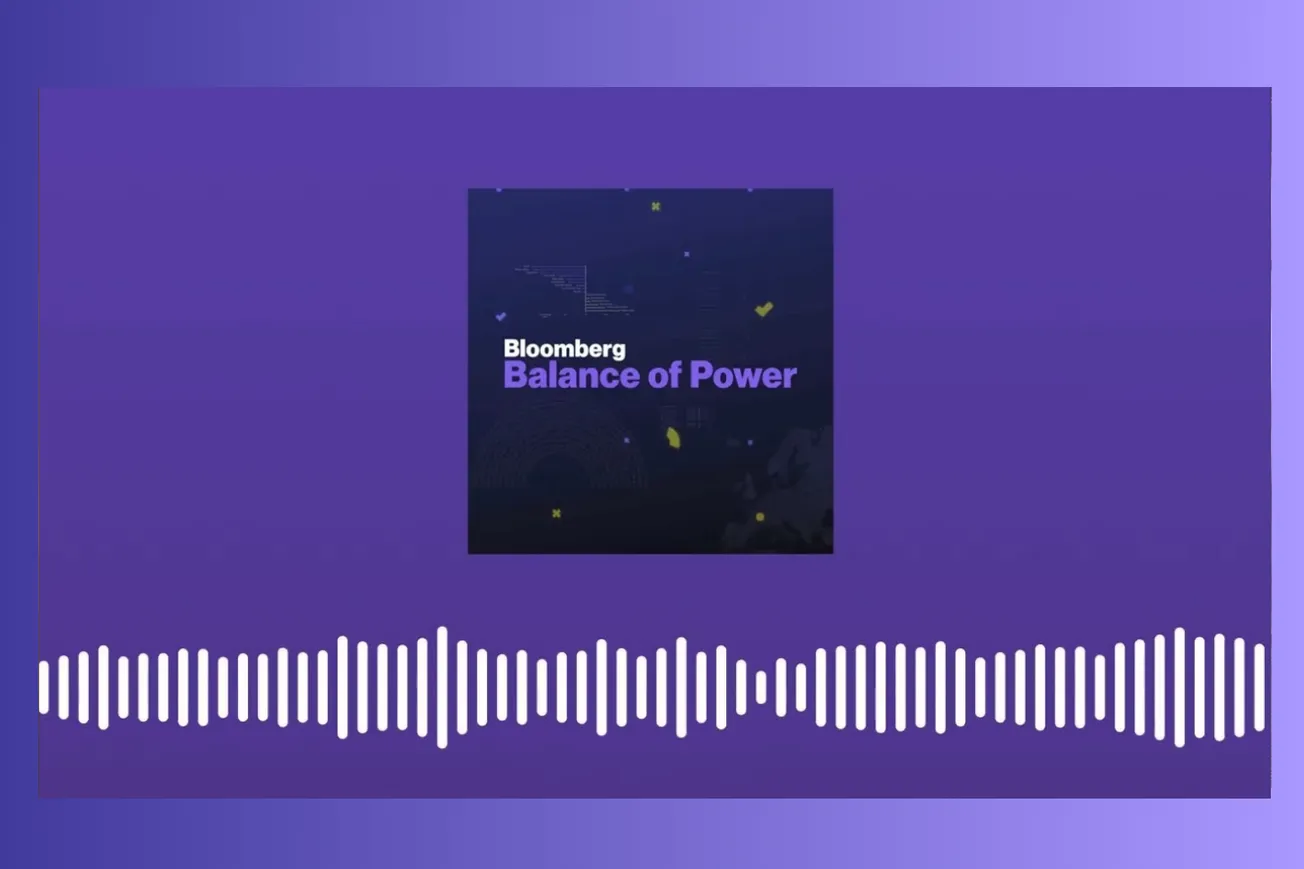Table of Contents
China builds nuclear reactors at one-fifth the cost of recent US projects while Western mega-projects like Hinkley Point face massive delays and cost overruns, revealing systematic construction failures despite growing AI-driven electricity demand.
As Microsoft pays $16 billion to restart Three Mile Island for data centers, the West's inability to build new nuclear capacity at reasonable costs becomes a critical bottleneck in the clean energy transition.
Key Takeaways
- China builds nuclear reactors at approximately 20% of recent US costs through standardized designs, vertical integration, and repetitive construction experience
- Western nuclear construction collapsed after 1980s due to flattening electricity demand, high interest rates, and shift from 14% to 3% financing costs with fracking boom
- Recent Western projects suffer massive overruns: Georgia's Vogtle plant cost $37 billion versus $13 billion budget, UK's Hinkley Point delayed from 2025 to 2031
- Mega-project construction failures plague Western infrastructure generally, with nuclear adding radiation safety requirements to already dysfunctional processes
- Skilled workforce shortages compound delays as projects require 2,000 specialized electricians and welders who disappear between infrequent construction cycles
- Nuclear proliferation risks remain manageable through International Atomic Energy Agency oversight, with reactor fuel enrichment (3-5%) far below weapons-grade (90%) requirements
Timeline Overview
- 00:00–12:30 — Western Nuclear Decline: 1980s demand flattening, high interest rates, oil shocks driving conservation, loss of public support through safety concerns
- 12:30–22:15 — Construction Cost Crisis: Mega-project failures, lack of repetitive building, subcontractor litigation, skilled workforce shortages in rural locations
- 22:15–35:20 — Light-Water Reactor Technology: Uranium enrichment process, ceramic fuel pellets, water cooling and steam generation, historical naval reactor origins
- 35:20–48:30 — Nuclear Weapons Proliferation: Centrifuge technology connections, International Atomic Energy Agency monitoring, fuel recycling concerns with plutonium
- 48:30–58:45 — Advanced Reactor Arguments: Higher temperature operation, industrial process heat applications, waste reduction through recycling, smaller market sizing
- 58:45–68:20 — AI Electricity Demand: Data center power requirements, gas turbine supply constraints, need for 24/7 baseload power, long-term growth projections
- 68:20–78:15 — China's Nuclear Success: Standardized designs, vertical integration, experienced workforce, transparency limitations but clear cost advantages
- 78:15–85:00 — Bipartisan Political Support: Nuclear becoming accepted across party lines, Biden administration Democratic embrace, resilience and security benefits
The Great Western Nuclear Retreat: Economics Over Engineering
- Western nuclear construction collapsed in the 1980s due to fundamental economic shifts rather than technical problems, with flattening electricity demand removing growth incentives
- High interest rates reaching 14% during oil shock periods made capital-intensive nuclear projects economically unviable regardless of construction efficiency
- Conservation efforts following 1970s energy crises reduced load growth projections, eliminating the scale needed to justify large nuclear investments
- Natural gas price volatility created cyclical nuclear interest: $8/MMBTU made nuclear attractive in early 2000s, then fracking dropped prices to $3/MMBTU
- Public opposition grew during this period of economic uncertainty, creating political resistance that persisted even when economic conditions improved
- Nuclear fell victim to broader Western infrastructure dysfunction rather than unique technical or safety challenges specific to atomic energy
Rachel Slaybar's economic analysis: "In the early 80s, interest rates were very high. Oil shocks of the 70s, conservation became a really big deal. And so load growth in the US changed and that was combined with really high interest rates."
Mega-Project Dysfunction: Why Western Construction Fails
- Western countries demonstrate systematic inability to complete large infrastructure projects on time and budget, with nuclear adding complexity to already broken processes
- Recent nuclear projects exemplify broader construction crisis: Vogtle plant in Georgia cost $37 billion versus $13 billion budget, nearly 300% overrun
- UK's Hinkley Point C guarantees £127 per megawatt hour versus £70 average electricity costs, requiring massive subsidies for economic viability
- Workforce shortages compound delays as specialized trades disappear between infrequent projects: Vogtle needed 2,000 electricians unavailable in rural Georgia
- Subcontractor litigation during construction creates additional delays and costs, with legal disputes slowing physical work progress
- First-of-a-kind syndrome affects every Western nuclear project since industries lack repetitive experience needed to achieve projected costs
The construction reality: "We're bad at mega projects. So we can't build a bridge on time and on budget. Why could we build a nuclear power plant on time and on budget?"
Light-Water Reactor Technology: Simple Physics, Complex Engineering
- Commercial nuclear reactors use uranium-235 enriched from 0.7% natural concentration to 3-5% fuel grade through centrifuge separation processes
- Fission process splits heavy uranium atoms when struck by neutrons, releasing heat energy used to boil water and generate steam for turbine electricity production
- Ceramic fuel pellets provide stable material form that won't melt or disperse, contained in metal tubes arranged in precise geometric arrays
- Water serves dual purpose as coolant removing heat from fuel and neutron moderator slowing down fission neutrons to maintain controlled chain reactions
- Light-water reactor dominance resulted from US Naval reactor program preferences, with Admiral Rickover favoring water over sodium coolant for submarine applications
- Design choice created path dependence similar to VHS versus Betamax competition, with water reactors winning despite potentially superior alternatives
Technical fundamentals: "Nuclear reactor is taking usually a uranium 235 atom which is a big heavy unstable atom and you add a neutron and the addition of that neutron causes enough extra energy in the atom that it becomes so unstable it splits into two pieces and in that process it releases heat."
Nuclear Proliferation Risks: Manageable Through Oversight
- Civilian nuclear fuel enrichment uses same centrifuge technology as weapons programs, creating legitimate proliferation concerns requiring international monitoring
- Reactor fuel enrichment (3-5%) remains far below weapons-grade requirements (90%), but equipment could theoretically be modified for higher enrichment levels
- International Atomic Energy Agency provides monitoring framework ensuring peaceful nuclear programs operate transparently with regular inspections
- Fuel recycling presents additional proliferation risks as processes extract plutonium, but modern techniques avoid weapons-usable material separation
- Many countries choose fuel supply agreements rather than domestic enrichment to avoid proliferation concerns and technical complexity
- Nuclear reactors cannot explode like weapons due to fundamental physics differences between controlled fission and explosive chain reactions
Proliferation framework: "It's totally possible to have a peaceful nuclear program and do it responsibly and transparently, and that is totally a thing. It's also possible to have your fuel provided for you."
Advanced Reactors: Promise Versus Proven Technology
- Advanced reactor designs offer higher operating temperatures enabling industrial process heat applications beyond electricity generation
- Improved thermal efficiency at higher temperatures increases energy output per unit of fuel, potentially improving economics through better fuel utilization
- Some advanced designs facilitate fuel recycling, reducing uranium mining requirements and creating less radioactive waste with shorter storage periods
- Factory manufacturing approaches promise to overcome Western mega-project construction failures through modular, repeatable processes
- Variable sizing options allow better matching to grid requirements, particularly for smaller markets or behind-the-meter applications
- Advanced reactors remain unproven commercially while light-water reactor technology offers known performance characteristics and regulatory approval pathways
The pragmatic argument: "We're just not good at mega projects. So instead of trying to become good at mega projects, what if we did something different that we're better at like small modular factory manufacturing."
AI-Driven Electricity Demand: Nuclear's Second Chance
- Artificial intelligence data centers create unprecedented electricity demand requiring 24/7 baseload power that intermittent renewables cannot provide alone
- Microsoft's $16 billion commitment to restart Three Mile Island demonstrates corporate willingness to pay premium prices for reliable carbon-free electricity
- Gas turbine manufacturing faces 5-year backlogs, limiting ability to quickly scale traditional backup power for renewable energy systems
- Electric vehicle adoption and heat pump deployment compound electricity demand growth beyond AI and data center requirements
- Long-term demand projections suggest massive electricity system expansion needed over next 20-30 years, requiring all available clean energy technologies
- Current supply chain constraints affect all power generation technologies, not just nuclear, creating opportunity for diverse energy portfolio approaches
Market reality: "Turbines for gas plants are also 5 years backordered, right? It's like really hard to build anything right now. And so you are going to need all the tools in your tool belt looking 20, 30 and beyond."
China's Nuclear Success: Standardization and Integration
- China builds nuclear reactors at approximately 20% of recent US project costs through systematic standardization and repetitive construction experience
- Vertical integration eliminates subcontractor coordination problems that plague Western construction projects, enabling better project management and cost control
- Chinese nuclear program uses identical reactor designs repeatedly, allowing workforce and supply chains to develop expertise through practice rather than starting fresh each time
- Construction management continuity means same project managers, welders, and electricians work on multiple reactors, building institutional knowledge and efficiency
- Similar cost advantages appear in South Korea and Middle East nuclear programs that follow standardized, vertically integrated approaches
- Transparency limitations prevent complete understanding of Chinese costs, but consistent international patterns suggest systematic rather than accounting advantages
International comparison: "When reactors are built inexpensively, it tends to be vertically integrated. You have one organization that is very well coordinated building these things."
Bipartisan Nuclear Politics: Climate Meets Security
- Nuclear power achieved rare bipartisan support in polarized American politics by combining climate benefits with energy security and domestic ownership advantages
- Biden administration became first Democratic administration to embrace nuclear energy, breaking decades of party-line opposition to atomic power
- Geothermal energy shares similar bipartisan appeal through domestic resources and climate benefits, suggesting broader clean energy coalition possibilities
- Nuclear provides energy independence advantages that appeal to security-focused conservatives while offering carbon-free electricity for climate-concerned liberals
- Resilience benefits during extreme weather events and grid disruptions create additional political support across party lines and geographic regions
- Ten-year trend shows increasing nuclear support regardless of presidential administration changes, suggesting durable political coalition formation
Political evolution: "Nuclear has become a bipartisan issue. Really the Biden administration was the first Democratic admin to embrace nuclear and so that crossover view of climate benefit and resilience and security."
The Workforce and Skills Crisis
- Nuclear construction requires specialized trades unavailable in rural locations where plants are typically sited, creating immediate workforce shortages
- Skills disappear between infrequent construction cycles as specialized electricians, welders, and project managers find employment in other industries
- Training timelines for nuclear-qualified workers extend project schedules when experienced personnel unavailable for new construction starts
- Regional workforce development requires sustained construction programs rather than one-off projects to maintain skills and institutional knowledge
- International workforce mobility could address shortages but faces regulatory barriers and security clearance requirements for nuclear facility access
- Apprenticeship and training programs need lead time measured in years, requiring advance planning that current reactive approach lacks
Workforce reality: "The Vogle nuclear power plant in Georgia needed 2,000 electricians and there weren't 2,000 electricians in rural Georgia and they all had to be moved and that just took so much longer."
Economic Viability and Market Positioning
- Hinkley Point C's £127 per megawatt hour guaranteed price represents 81% premium over UK's £70 average electricity costs, requiring substantial public subsidies
- Nuclear economics depend heavily on financing costs, with low interest rates essential for capital-intensive projects to compete with alternatives
- China's state financing advantages may explain part of cost differential beyond construction efficiency, though Western projects still show poor execution
- Corporate power purchase agreements from tech companies provide new revenue model bypassing traditional utility regulation and cost allocation
- Carbon pricing mechanisms could improve nuclear competitiveness by recognizing climate benefits, though current carbon markets remain limited
- Grid reliability and capacity value during extreme weather events create additional economic benefits not captured in simple cost comparisons
Financial challenge: "UK the average cost of power is about £70 per megawatt hour. The Hinkley Sea power plant which is under construction has been guaranteed a price of £127 per megawatt hour."
Critical Assessment of Nuclear Renaissance Claims
Rachel Slaybar's optimistic assessment of nuclear potential reflects her professional investment in the technology through DCVC venture capital rather than objective industry analysis. While her technical expertise provides valuable insights into reactor physics and engineering, the economic projections require skeptical evaluation given the nuclear industry's decades-long pattern of over-promising on costs and delivery timelines.
The comparison between Chinese and Western nuclear costs lacks sufficient transparency to determine how much results from construction efficiency versus accounting practices, state financing advantages, and regulatory differences. Chinese nuclear economics may not be replicable in Western regulatory environments requiring independent safety oversight and competitive procurement processes.
The AI-driven electricity demand narrative, while containing legitimate elements, may overstate nuclear's competitive position relative to renewable energy combined with storage technologies. Natural gas with carbon capture, enhanced geothermal, and long-duration storage technologies all compete for the same baseload power market nuclear seeks to serve.
The bipartisan political support claim requires careful evaluation as energy policy remains subject to partisan swings despite nuclear's current acceptance. Sustained political commitment across electoral cycles remains uncertain, particularly if costs continue exceeding projections or alternatives prove more economically attractive.
Common Questions
Q: Why do Chinese nuclear reactors cost one-fifth as much as Western projects?
A: Standardized designs, vertical integration, experienced workforce, and repetitive construction versus Western mega-project dysfunction and lack of experience.
Q: Can nuclear weapons be made from civilian reactor fuel?
A: No, reactor fuel is enriched to 3-5% versus 90% weapons-grade, though enrichment equipment could theoretically be modified for higher concentrations.
Q: Why did Western countries stop building nuclear plants in the 1980s?
A: Flattening electricity demand, high interest rates up to 14%, and natural gas price reductions from fracking made nuclear uneconomical.
Q: How long do Western nuclear projects take to build currently?
A: Recent projects show 10-15 year timelines with major delays, versus 5-6 years for standardized Chinese reactors built repeatedly.
Q: Is nuclear power becoming bipartisan in American politics?
A: Yes, combining climate benefits appealing to Democrats with energy security and domestic ownership advantages favored by Republicans.
Strategic Implications for Western Energy Policy
The Western nuclear construction crisis represents a broader symptom of infrastructure dysfunction rather than unique atomic energy challenges. Countries that successfully deploy nuclear power demonstrate systematic advantages in project management, workforce development, and supply chain coordination that extend beyond nuclear into general construction capabilities.
The economic viability of nuclear power depends critically on achieving repetitive construction experience and maintaining skilled workforces between projects. Without sustained construction programs, Western countries face permanently higher costs due to learning curve resets and workforce skill degradation.
China's nuclear success provides a competitive advantage in global energy technology exports while Western countries struggle to maintain domestic nuclear capabilities. This technology gap has strategic implications for energy security and climate leadership as other nations seek carbon-free baseload power solutions.
The AI-driven electricity demand growth creates a window of opportunity for nuclear revival, but only if Western countries address fundamental construction and workforce challenges. Without systematic improvements to mega-project delivery, nuclear will remain economically uncompetitive regardless of technical advances or political support.
Practical Implications
- For Energy Investors: Focus on countries and companies demonstrating standardized reactor designs with repetitive construction experience rather than first-of-a-kind projects
- For Utility Operators: Evaluate nuclear investments based on long-term power purchase agreements from creditworthy customers rather than wholesale market economics
- For Policy Makers: Address mega-project dysfunction through construction industry reforms and workforce development rather than technology-specific subsidies
- For Technology Developers: Prioritize designs that minimize on-site construction complexity and leverage existing manufacturing capabilities
- For Grid Planners: Integrate nuclear as part of diverse clean energy portfolios rather than competing with renewable energy for market share
The nuclear renaissance requires solving Western construction dysfunction before atomic technology can contribute meaningfully to clean energy transitions.





